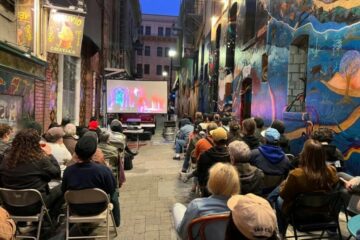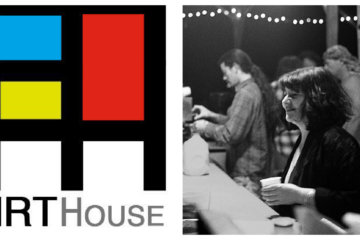Let’s Fix This City: Building A Community For The Homeless…European Style
Bohemian Archivist P Segal has lost interest in how cool the city used to be, and is now focusing bohemian inventiveness on how cool the city could be, with a few modifications.
I met many homeless people, when I worked as a therapist in a clinic, seeing children who lived in shelters. Often they couldn’t make appointments, because their mothers were stuck at their jobs, which didn’t pay enough for rent, and if they didn’t get to the shelter before 6, they were locked out. A new $3 million experimental shelter has been created recently that doesn’t have a curfew, and that is an improvement.
Obviously, we still don’t have enough shelters, because there are still plenty of people sleeping on the streets—or maybe people prefer the streets to a 6 pm lock-down. The fact that we turn a blind eye to that is literally murder. The average life expectancy of a homeless person is between 42 and 52, and for most of us, the average life expectancy is 78. So when we let people sleep in the streets, we’re letting them die prematurely.
It doesn’t have to be like that. There are solutions that don’t involve spending millions. I saw infinitely more interesting solutions in Berlin last year, when a friend took me on a walking tour of the famous squats and alternative communities of the Kreuzberg district.
The northern border of Kreuzberg was a no-man’s land where the wall divided east from west. People didn’t want to go there, so artists and punk rockers did. One of the largest and best organized communities there is Kreuzdorf (the little town of Kreuzberg), a ragtag collection of old trailers, shacks, and constructions that would never meet code in San Francisco. Quintessentially German, the community is neat and ordered. Each resident has a role in providing services for the entire community. It’s been there 40 years and only recently has had to raise money to remain there.
The Germans have a fairly open-minded view of public space: it’s there for the public to use, and if they chose to set up a community there, okay. Now the governments in several German cities are considering relaxing the building codes, so they can construct enough immediate temporary housing for thousands of Syrian refugees.
Is there a reason why we can’t have Kreutzdorfs here? Pick unused tracts of land and enable people to build communities. Give them materials from demolition to create structures, perhaps provide some yurts for families, and put them on a grid so everyone can have electricity. Install one structure for an oversight team, computer access, washers and dryers, bathrooms, and a place to get phone calls and mail—a big reason why homeless people can’t get jobs. Bring in a bus for showers. Plant a community kitchen garden. Create a covered outdoor kitchen, to make communal meals. Install solar panels for electricity. Surround the community with a bamboo fence, to give the residents privacy.
I don’t want to hear that we can’t let people build their own inventive quarters because they’re endangered when buildings don’t meet code. They’re far more endangered without shelter (like an estimated 30 years of life), and far more empowered when given tools to create something. When people have to get to a traditional shelter by 6 or get locked out, they’re infantilized. When they have a role in the community (keeping things tidy, tending a garden, helping others make shelters, cooking) there’s a reason to get up in the morning, and the people who work together to do it develop real bonds. They also get experience that may qualify them for jobs.
It would be an experiment, but a cheap one. The cost: a single structure for headquarters, bathrooms, laundry, and computer access that could be a trailer. How much could it cost to buy some easily constructed yurts, made of insulation material, that are cool in the heat and warm in the cold, or to install solar panels and a grid? A truck, for trips to the Food Bank, or jobs for residents like hauling, could be donated. Building materials could be free. It could be managed by one of the nonprofits in the city that works with the homeless.
It would cost some money, but not that much, especially when you consider that it could add decades to the lives of people who live there, and create a better quality of life for the people who most need an upgrade. Unlike other more traditional solutions, this costs little, uses ingenuity, and enables people to form a community to create things for themselves. Curfews infantilize, but tools enable, and community gives hope and support, which is exactly what people need most when life is hardest. And it would look kind of like Burning Man.
I took the above photo of Kreuzdorf shortly before one of the residents tried to rip the camera out of my hands. The privacy of citizens in this community is fully respected.










